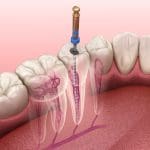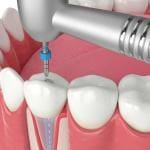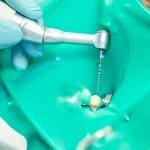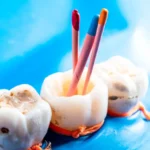Rubber dam is an indispensable tool in the field of dentistry, serving a crucial role in isolating the operative field during various dental procedures. This flexible and durable barrier has become an essential component of modern dental practices, offering numerous advantages over traditional isolation methods. In this comprehensive guide, we will explore the applications, benefits, and techniques associated with rubber dams in dentistry.
Historical Perspective
The concept of isolating teeth during dental procedures dates back centuries, with early attempts involving materials like wax and metal frames. However, it wasn’t until the 19th century that the rubber dam, as we know it today, was introduced. Dr. Sanford Christie Barnum is credited with inventing the rubber dam in 1864, revolutionizing the way dental procedures were performed. Since then, rubber dams have undergone significant advancements, evolving into an indispensable tool in modern dentistry.
Components of a Rubber Dam
A rubber dam is composed of several essential components that work together to create an effective barrier. These components include:
- Rubber Dam Sheet
- Clamps
- Frame
- Punches
Rubber Dam Sheet
The primary component, typically made of latex or non-latex materials, forms the physical barrier that isolates the tooth or teeth during a dental procedure.
Clamps
Metal or plastic clamps are used to secure the rubber dam in place, ensuring proper isolation and preventing any moisture contamination.
Frame
Frames provide support for the rubber dam sheet, aiding in its proper placement and maintenance of tension during the procedure.
Punches
Specialized hole punches are used to create holes in the rubber dam through which the isolated tooth or teeth emerge.
Applications of Rubber Dam
Rubber dams find applications in various dental procedures, enhancing the efficiency and effectiveness of treatments. Some common applications include:
- Restorative Dentistry
- Endodontics
- Periodontal Procedures
- Orthodontics
Restorative Dentistry
Rubber dams are routinely used in restorative procedures such as cavity preparations, composite fillings, and crown placements. Isolating the operative field ensures optimal conditions for the placement of restorative materials.
Endodontics
In endodontic procedures like root canal treatments, rubber dams provide a dry and sterile environment, preventing contamination of the root canals and improving the success rate of the treatment.
Periodontal Procedures
Rubber dams are employed in periodontal surgeries and treatments to isolate specific teeth or areas, facilitating focused interventions while maintaining a clean and dry environment.
Orthodontics
Rubber dams are occasionally used in orthodontic procedures to isolate individual teeth during bonding of brackets or placement of appliances.
Benefits of Using Rubber Dams
The adoption of rubber dams in dental procedures offers numerous advantages for both practitioners and patients. Some key benefits include:
- Moisture Control
- Improved Visibility
- Infection Control
- Patient Comfort
- Enhanced Efficiency
Moisture Control
Rubber dams provide excellent moisture control by isolating the operative field, preventing saliva, blood, or other fluids from contaminating the treatment area. This is especially crucial in restorative and endodontic procedures.
Improved Visibility
Isolating the tooth or teeth with a rubber dam enhances visibility for the dentist, allowing for more precise and accurate treatment. This is particularly beneficial in procedures where precision is paramount.
Infection Control
Rubber dams contribute to infection control by creating a barrier that minimizes the risk of microbial contamination during dental procedures, particularly in endodontic treatments.
Patient Comfort
Patients often experience increased comfort during procedures when a rubber dam is used. It minimizes the chances of accidental contact with dental instruments and provides a sense of security.
Enhanced Efficiency
The use of rubber dams can lead to increased efficiency in dental procedures. With improved isolation and visibility, dentists can work more effectively, potentially reducing the overall duration of the treatment.
Rubber Dam Placement Techniques
Proper placement of a rubber dam is crucial for its effectiveness. While the technique may vary slightly based on the procedure and individual preferences, a general step-by-step approach includes:
1. Patient Assessment:
Evaluate the patient’s dental and medical history to identify any contraindications or specific considerations for using a rubber dam.
2. Gather Materials:
Ensure all necessary materials, including the rubber dam sheet, clamps, frame, punch, and lubricant, are readily available.
3. Selecting the Rubber Dam Sheet:
Choose an appropriate rubber dam sheet size and material based on the procedure and patient characteristics. Lubricate the side facing the patient’s face to enhance patient comfort.
4. Isolating the Teeth:
Place the rubber dam sheet over the frame and use clamps to secure it in place. Use a punch to create holes for the teeth to be treated.
5. Securing the Clamps:
Attach the clamps to the rubber dam frame, ensuring a secure but not overly tight fit. Adjust the tension to maintain a taut rubber dam sheet.
6. Placing the Rubber Dam:
Carefully place the rubber dam over the patient’s mouth, making sure it covers the target teeth and extends beyond the dental arch. Adjust the frame and clamps as needed for proper positioning.
7. Verifying Isolation:
Confirm that the rubber dam effectively isolates the target teeth, leaving the surrounding area exposed for the dental procedure.
8. Performing the Procedure:
Begin the dental procedure, taking advantage of the improved visibility and moisture control provided by the rubber dam.
Challenges and Considerations
While rubber dams offer numerous advantages, certain challenges and considerations should be acknowledged:
- Patient Cooperation
- Allergies
- Isolation in Specific Cases
- Equipment Maintenance
Patient Cooperation
Some patients may find the placement of a rubber dam uncomfortable, and cooperation can vary. Proper communication and patient education can help alleviate concerns.
Allergies
Some individuals may have latex allergies, necessitating the use of non-latex alternatives. Dental practitioners should be aware of potential allergic reactions and have suitable alternatives available.
Isolation in Specific Cases
In certain clinical situations, such as very posterior teeth or teeth with limited access, achieving effective isolation with a rubber dam can be challenging. Dentists must carefully assess each case to determine the suitability of using a rubber dam.
Equipment Maintenance
Regular inspection and maintenance of rubber dam equipment, including frames, clamps, and sheets, are essential to ensure their effectiveness and longevity.
Recent Advancements in Rubber Dam Technology
As technology continues to advance, the field of dentistry has seen innovations in rubber dam materials and design. These advancements aim to address some of the challenges associated with traditional rubber dams and further improve their efficiency and patient experience.
- Non-Latex Alternatives
- Biodegradable Options
- Enhanced Clamps
- Color-Coded Components
- Improved Frame Designs
Non-Latex Alternatives
Given the prevalence of latex allergies, manufacturers have developed non-latex alternatives, such as rubber dams made from polyurethane or nitrile materials. These alternatives provide a safe option for patients with latex sensitivities.
Biodegradable Options
Environmental concerns have led to the development of biodegradable rubber dam materials. These eco-friendly alternatives break down more rapidly after disposal, reducing their environmental impact.
Enhanced Clamps
Modern rubber dam clamps come in various designs, including winged and wingless options, allowing for better adaptation to different tooth shapes and sizes. Some clamps are also equipped with advanced mechanisms for easier placement and removal.
Color-Coded Components
To streamline the rubber dam placement process, color-coded components have been introduced. These color-coding systems help dentists quickly identify and select the appropriate size and type of clamps, frames, and rubber dam sheets.
Improved Frame Designs
Advanced frame designs incorporate features such as adjustable tension and better stability, making it easier for dentists to achieve optimal placement and maintain the necessary tension throughout the procedure.
Conclusion
Rubber dams have become indispensable tools in modern dentistry, offering a range of benefits that contribute to improved outcomes for both practitioners and patients. From restorative procedures to endodontic treatments, the applications of rubber dams are extensive. With proper technique and consideration of individual patient factors, the effective use of rubber dams can significantly enhance the efficiency and success of dental treatments. As the field of dentistry continues to evolve, the role of rubber dams remains a cornerstone in ensuring optimal conditions for a wide array of dental procedures.





